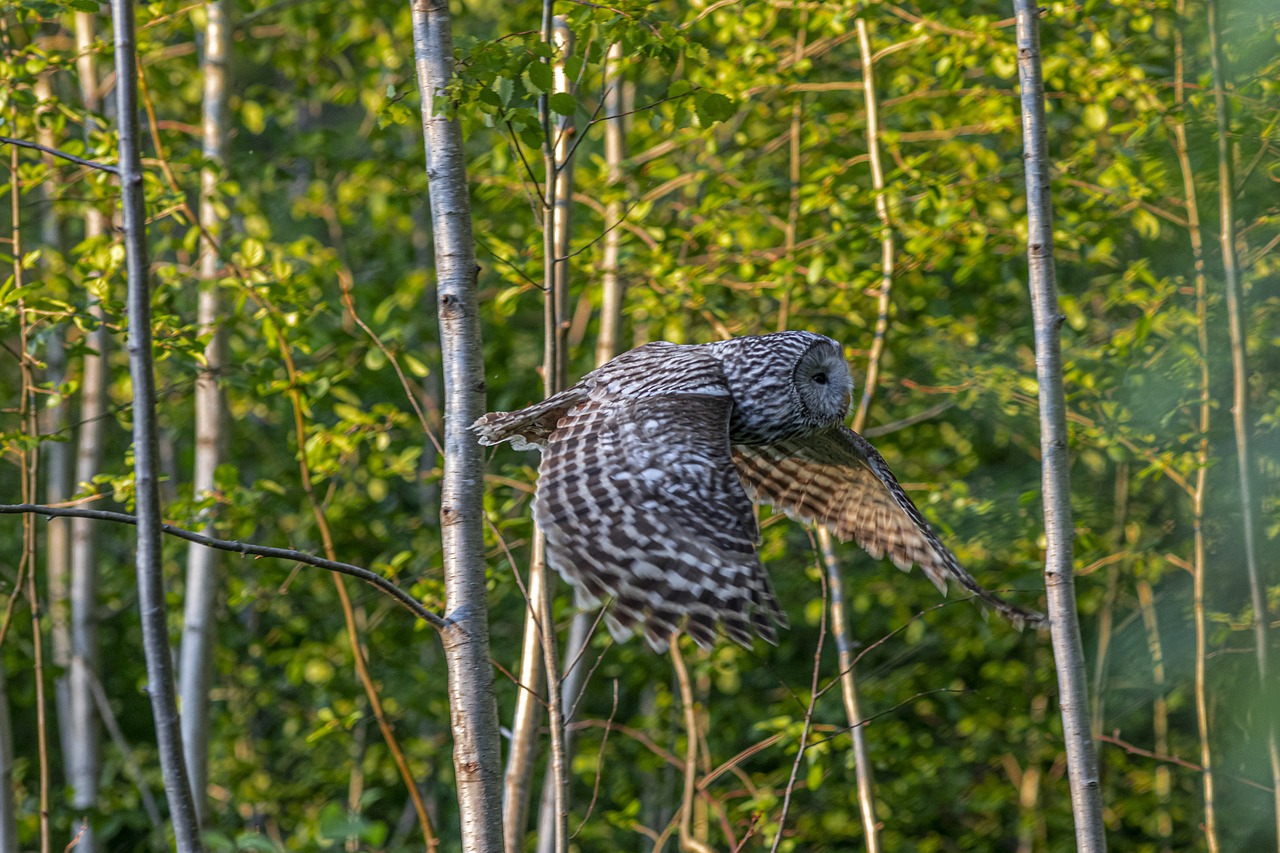The Ural owl (Strix uralensis) is a medium to large species of owl found predominantly across the boreal forests of Europe and Asia. This nocturnal bird of prey is known for its striking appearance and distinct vocalizations.
Physical Description
The Ural owl is relatively large, with a body length ranging from 50 to 62 cm (20 to 24 inches) and a wingspan of about 110 to 134 cm (43 to 53 inches). It has a rounded head without ear tufts and a pronounced facial disc that is typically pale with dark concentric lines. The eyes are dark brown to black, giving it an intense expression. Its plumage is generally a mix of light grey and white, streaked with darker bars and spots, which provides effective camouflage in its woodland habitat. The underparts are paler with fine streaking, while the tail is long and barred.
Distribution and Habitat
The Ural owl’s range extends from Scandinavia and Eastern Europe through Russia and into parts of northeastern Asia. It favors dense, mature forests, particularly those with a mix of coniferous and deciduous trees. These owls are often found near open areas such as clearings, bogs, and meadows, which provide hunting grounds.
Behavior and Diet
Ural owls are nocturnal hunters, though they may also be active during dawn and dusk. They have a varied diet that includes small mammals, birds, amphibians, and insects. Voles and mice constitute a significant portion of their prey. The owl hunts from a perch, using its acute hearing and vision to locate prey before swooping down silently on its target.
Breeding and Lifespan
The breeding season for Ural owls begins in late winter to early spring. They typically nest in tree cavities, abandoned nests of other large birds, or occasionally on cliff ledges. The female lays 2 to 4 eggs, which she incubates for about a month. During this time, the male provides food for the female and the young once they hatch. The chicks fledge approximately a month after hatching but remain dependent on the parents for several more weeks. Ural owls can live up to 20 years in the wild, though lifespan can vary based on environmental factors and predation.
Vocalizations
The Ural owl is known for its distinctive calls, which can be heard primarily during the breeding season. The male’s call is a series of deep, resonant hoots, while the female’s call is similar but softer. They also emit a variety of screeches, barks, and whistles used in different contexts, such as communication between mates and signaling alarm.
Conservation Status
The Ural owl is currently listed as Least Concern by the IUCN, although its populations are subject to threats such as habitat destruction and fragmentation due to logging and land-use changes. Conservation efforts focus on preserving mature forest habitats and maintaining a healthy population of prey species.
In summary, the Ural owl is a fascinating and vital part of the ecosystems it inhabits, with its impressive hunting skills, distinctive calls, and important role in controlling small mammal populations. Conservation of its habitat is crucial for ensuring the continued survival of this remarkable bird.cosystems.
Views: 328
Subscribe to the newsletter:
